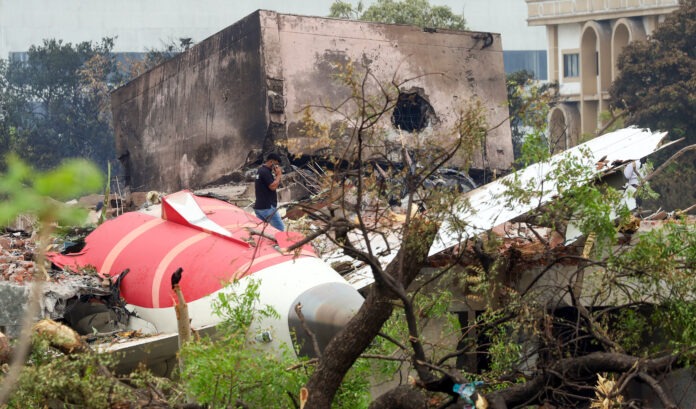A preliminary investigation into the deadly crash of Air India’s Boeing 787-8 aircraft (VT-ANB) on June 12 has revealed that both engines shut down within seconds of take-off due to unexplained activation of the fuel cut-off switches, killing all 260 people on board and 19 others on the ground.
Flight AI171, en route from Ahmedabad to London Gatwick, had lifted off from Runway 23 at 13:39 IST. Seconds after achieving take-off speed, the aircraft’s two engines lost power almost simultaneously, causing the plane to plummet into a residential block adjacent to BJ Medical College, barely 0.9 nautical miles from the runway’s end.
As per the preliminary report issued by the Aircraft Accident Investigation Bureau (AAIB), Enhanced Airborne Flight Recorder (EAFR) data showed that the fuel control switches for both engines were manually moved from the “RUN” to “CUTOFF” position one after another, within a one-second interval, right after take-off. The cockpit voice recorder captured a chilling exchange where one pilot asked, “Why did you cut off?” The other pilot replied, “I didn’t.”
A subsequent attempt to restore power saw both switches returned to “RUN,” and auto-start sequences initiated a partial relight of the engines. However, the aircraft had already lost too much altitude. It clipped trees, struck an incineration chimney, and crashed into a hostel building. The vertical stabilizer, tail section, and both engines were found scattered across multiple buildings, with fire and structural damage widespread across the debris field.
The report stops short of assigning fault but raises crucial questions about the aircraft’s throttle and fuel control systems. Notably, the crash aircraft had not undergone the FAA-recommended inspections under Special Airworthiness Information Bulletin NM-18-33. Though non-mandatory, this advisory warned of potential disengagement of fuel control switch locking mechanisms on Boeing aircraft, including the model that VT-ANB belonged to.
VT-ANB had no reported defects related to fuel switches in the past two years, but had previously undergone throttle control module replacements in 2019 and 2023.
The tragedy, one of the worst in India’s recent aviation history, claimed the lives of all 242 passengers and crew on board, including foreign nationals from the UK, Portugal, and Canada. Additionally, 19 individuals on the ground perished, while 67 others sustained serious injuries.
Weather and runway conditions were normal, with no bird activity or external obstructions reported. The aircraft had been declared airworthy and had passed its Airworthiness Review Certificate just three weeks prior. The captain, a 56-year-old veteran with over 15,000 flying hours, and the 32-year-old co-pilot had both been medically cleared and adequately rested before the flight.
Investigators from the US NTSB, Boeing, GE, and international safety boards are assisting the Indian probe. The AAIB confirmed that both flight recorders were recovered and data from the forward unit has been successfully downloaded. Analysis is ongoing.
Meanwhile, wreckage has been secured near the airport, and fuel samples from the aircraft have passed initial quality tests. Postmortem reports of the crew and passengers are also being analysed for any contributory factors.
No immediate safety recommendations have been issued for other B787-8 or GEnx-1B operators, but investigators hinted that deeper scrutiny into fuel switch assemblies and possible mechanical malfunctions is underway.
The final report is awaited.





